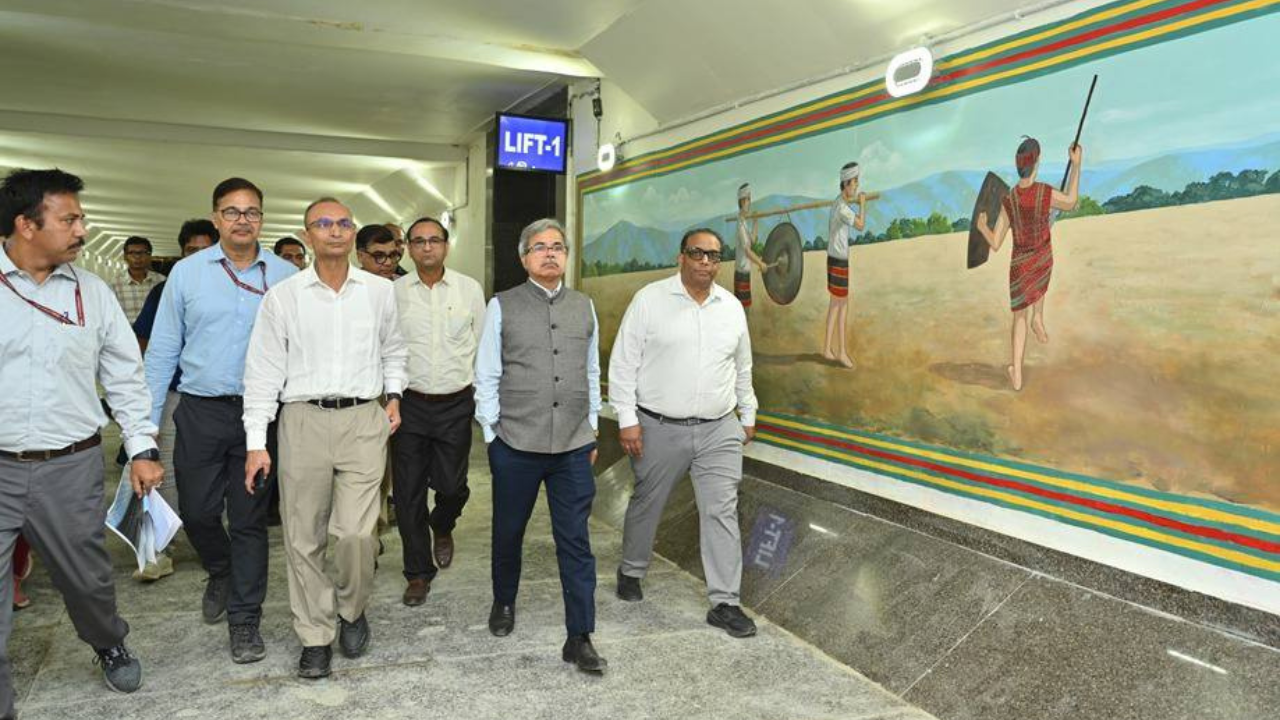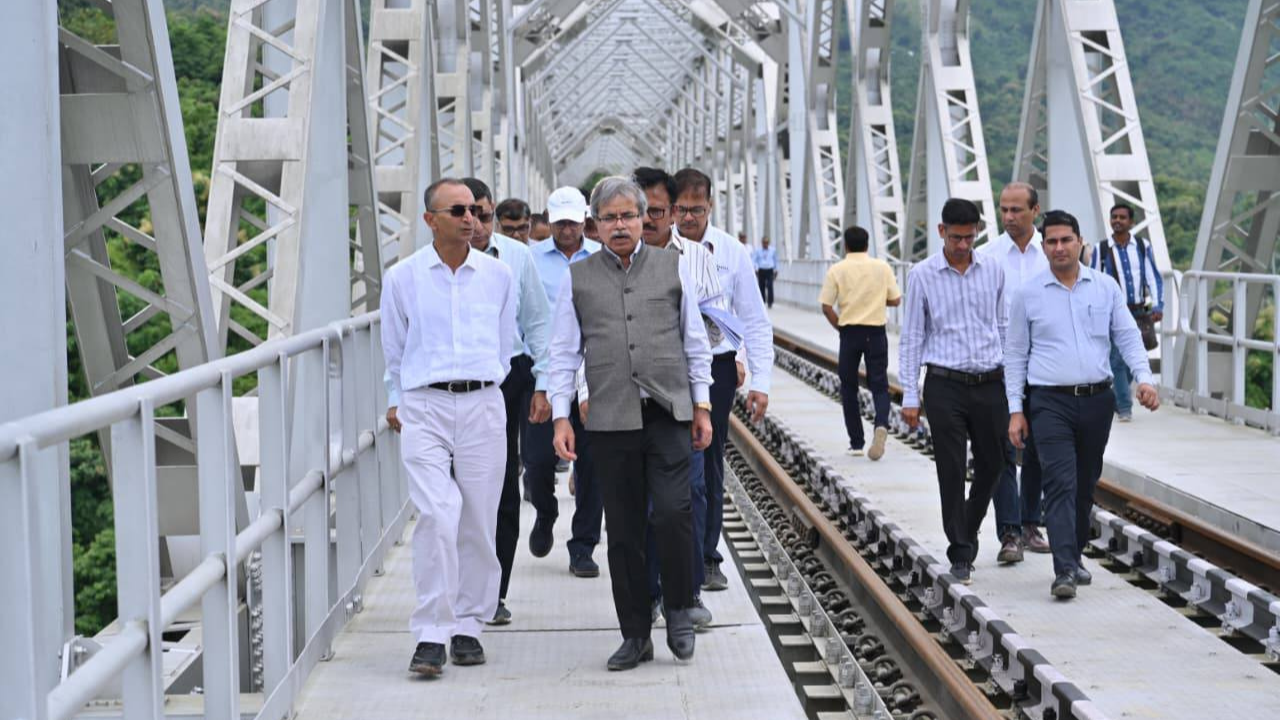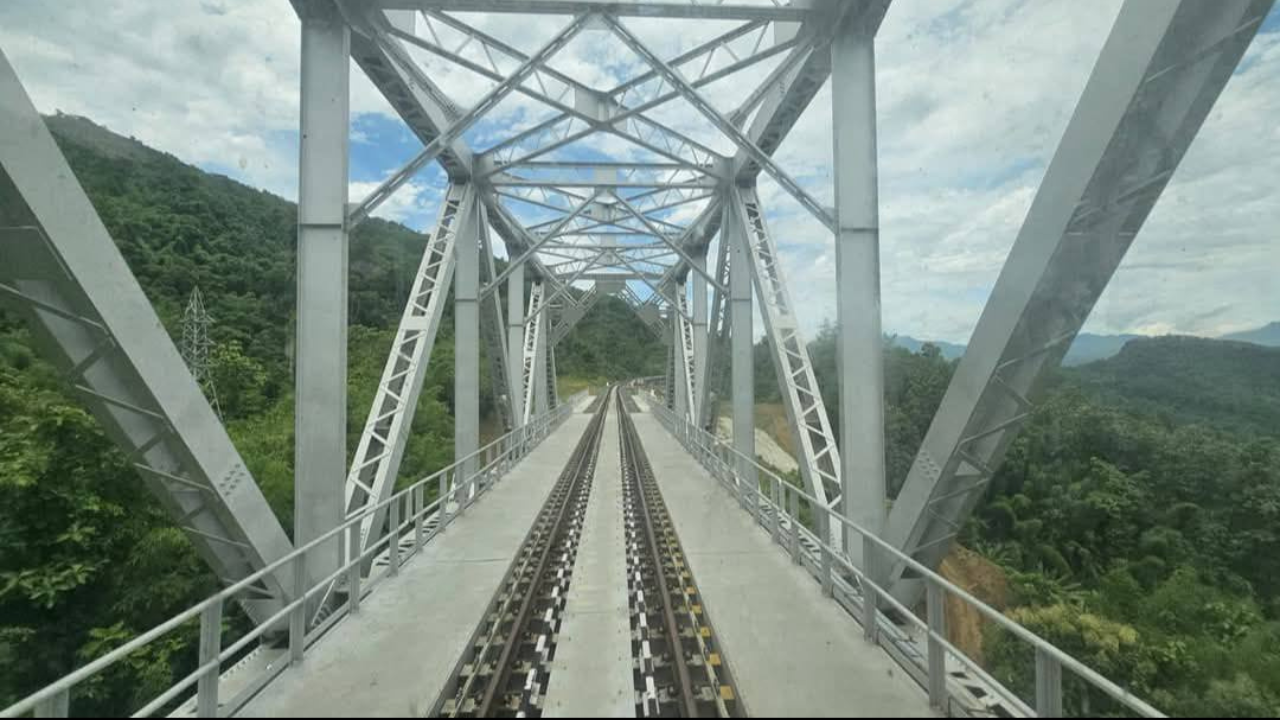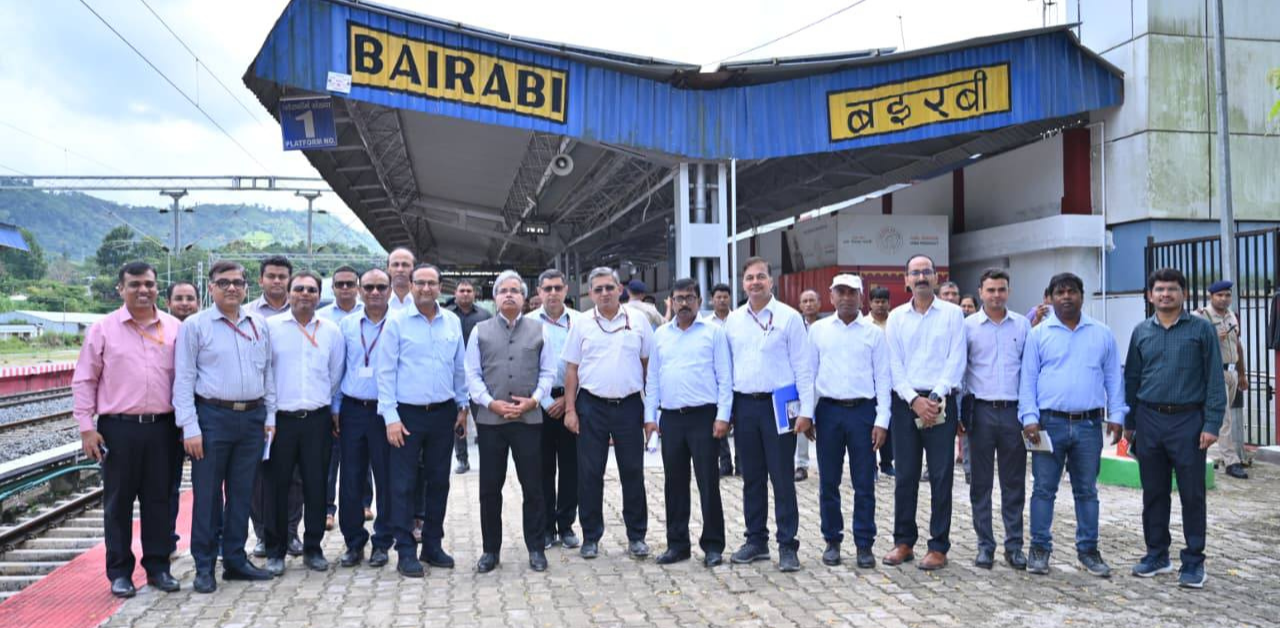Engineering Triumph in Mizoram The Bairabi–Sairang New Line

MizoramTrain Chairman Satish Kumar visits Bairabi-Sairang The completion of the 51.38 km Bairabi–Sairang New Line Railway Project represents a watershed moment in India’s infrastructure journey, particularly in the context of the Northeast region. Nestled within Mizoram’s challenging terrain, this project is not merely about laying down railway tracks but about overcoming immense engineering, environmental, and logistical hurdles. Mizoram, one of India’s most hilly and landlocked states, has historically faced difficulties in accessibility due to its rugged landscape. The project had to address 48 tunnels stretching 12.6 km, along with 55 major bridges and 87 minor bridges, making it one of the most technically demanding railway undertakings in the country.
What makes this project exceptional is not just the engineering brilliance but the perseverance and vision behind it. The Indian government had long recognized the need to bring Mizoram into the fold of mainstream railway connectivity. Declared a National Project in 2008-09, the initiative received priority funding, underlining the strategic intent to integrate Mizoram’s economy with the broader national framework. The foundation stone, laid by Prime Minister Narendra Modi in 2014, was more than a symbolic gesture; it marked the beginning of a focused push to link Mizoram’s capital, Aizawl, with the rest of India through rail.
The project timeline underscores the sheer scale of challenges faced. While conceptualized in 1999, it took more than a decade before land acquisition and construction gained pace. Delays caused by land issues, environmental clearances, and the complexity of tunneling through fragile hill slopes stretched the timeline to nearly 11 years from foundation to completion. However, the perseverance of Northeast Frontier Railway engineers and the commitment of the central government ensured that the project reached its final stages by mid-2025, with full-scale completion announced in July 2025.
Beyond engineering feats, the project’s success has broader implications. Rail connectivity is set to transform Mizoram’s economic prospects, facilitating faster movement of goods, reducing logistical costs, and opening avenues for trade. For ordinary citizens, it will mean easier travel and stronger integration with the rest of India. Importantly, the project dovetails with the Act East Policy, enhancing connectivity not just within India but also laying the groundwork for potential future links to Southeast Asia. The inspection by Railway Board Chairman Satish Kumar in August 2025 further reaffirms the project’s strategic importance and readiness for operations.
This is not just a railway project; it is a story of resilience, national integration, and engineering mastery—a project that will be remembered as a cornerstone in India’s Northeast development journey.
References (Lesson 1):
Northeast Frontier Railway official reports and press releases (2025).
Ministry of Railways, Government of India: National Projects and Act East Policy (2008–2025).
IDTV 24×7 Online, August 25, 2025: Chairman Railway Board Inspection Report
Economic and Social Transformation through Mizoram’s First Rail Link

The Bairabi–Sairang New Line Railway Project is more than just a transport initiative—it is a catalyst for economic and social transformation in Mizoram. With its completion in July 2025 and upcoming inauguration in September, Mizoram is set to witness a historic moment: the integration of its capital region into India’s national railway grid. For decades, Mizoram’s connectivity challenges have limited its potential, with roadways serving as the primary mode of transport in a state dominated by steep hills and valleys. The arrival of railways will mark a shift, enhancing accessibility, reducing isolation, and unlocking new growth opportunities for both people and businesses.
One of the most profound impacts of this project lies in its potential to stimulate Mizoram’s economy. Currently, the state relies heavily on imports from outside for essential goods, which increases transportation costs and retail prices. The rail link will significantly cut down freight costs, making commodities cheaper and supply chains more efficient. Agricultural producers and small entrepreneurs in Mizoram will gain better access to external markets, thereby fostering inclusive economic development. Moreover, the improved logistics network will make Mizoram more attractive for industries such as agro-processing, tourism, and small-scale manufacturing, aligning with the larger economic objectives under India’s Act East Policy.
Socially, the railway line promises to bring Mizoram closer to the rest of India. Travel for education, employment, and healthcare will become easier, reducing the state’s geographical and psychological isolation. The project also carries symbolic significance: Mizoram, one of the last northeastern states without proper railway access, will finally be part of the nationwide rail family. This step enhances the sense of integration and belonging, strengthening national unity.
Tourism, a sector with immense untapped potential in Mizoram, is expected to benefit immensely. The Bairabi–Sairang line will open the door for travelers from across India, who can now more conveniently explore Mizoram’s scenic landscapes, rich culture, and heritage. Improved accessibility is likely to boost eco-tourism, generate employment, and increase state revenues.
Furthermore, the project’s environmental sensitivity is noteworthy. Built in a fragile ecosystem, Indian Railways employed eco-friendly practices, including slope stabilization and green construction methods, to minimize ecological disruption. This balance between infrastructure development and environmental care sets a precedent for future projects in similar regions.
As regular train services commence post-inauguration in September 2025, Mizoram will enter a new chapter—one that intertwines progress, integration, and sustainability. The Bairabi–Sairang railway line stands not just as a physical connection but as a bridge to Mizoram’s brighter future.
References (Lesson 2):
Comptroller and Auditor General (CAG) of India reports on Northeast railway infrastructure (2019–2024).
Press Information Bureau (PIB), Government of India, “Rail Connectivity in Northeast under Act East Policy” (2023–2025).
The Hindu, June 2025: Report on CRS safety clearance for Bairabi–Sairang project.
Chairman Railway Board Satish Kumar Meets Mizoram CM, Reviews Bairabi–Sairang Rail Project

In a key development for Mizoramrtrian connectivity and infrastructure growth, Satish Kumar Chairman of the Railway Board & Chief Executive Officer (CEO), visited Aizawl and met Chief Minister Pu Lalduhoma to discuss the progress of the Bairabi–Sairang New Line Railway Project. This high-level meeting underlines the importance of the project, which will connect Mizoram’s capital, Aizawl, directly to the national railway network for the first time, fulfilling a long-awaited aspiration of the people of the state.
During the visit, Satish Kumar was accompanied by Chetan Kumar Shrivastava, General Manager of Northeast Frontier Railway (NFR), and Arun Kumar Chaudhary, General Manager (Construction), NFR, along with senior railway and construction officials. The delegation inspected the ongoing works and reviewed strategic plans for strengthening rail infrastructure in Mizoram, which is seen as vital for boosting trade, tourism, and socio-economic development in the region.
The Bairabi–Sairang rail line is widely regarded as an engineering marvel of Indian Railways, extending over 51.38 km and built at an estimated cost of Rs. 8,071 crore. The project features 48 tunnels totaling 12.8 km, 55 major bridges, 87 minor bridges, 5 Road Over Bridges, 6 Road Under Bridges, and four new stations—Hortoki, Kawnpui, Mualkhang, and Sairang. Among the highlights is Bridge No. 196, standing 114 meters high—42 meters taller than Delhi’s Qutub Minar—making it one of the tallest railway bridges in India.
Despite the challenging hilly terrain, the Northeast Frontier Railway has made remarkable progress, showcasing engineering excellence and perseverance. Once operational, the Bairabi–Sairang line will not only make passenger travel more convenient but also strengthen regional connectivity, reduce transportation costs, enhance tourism, and accelerate Mizoram’s integration with the rest of India. This project embodies the government’s commitment under the Act East Policy to bring the Northeast closer to the national mainstream.



